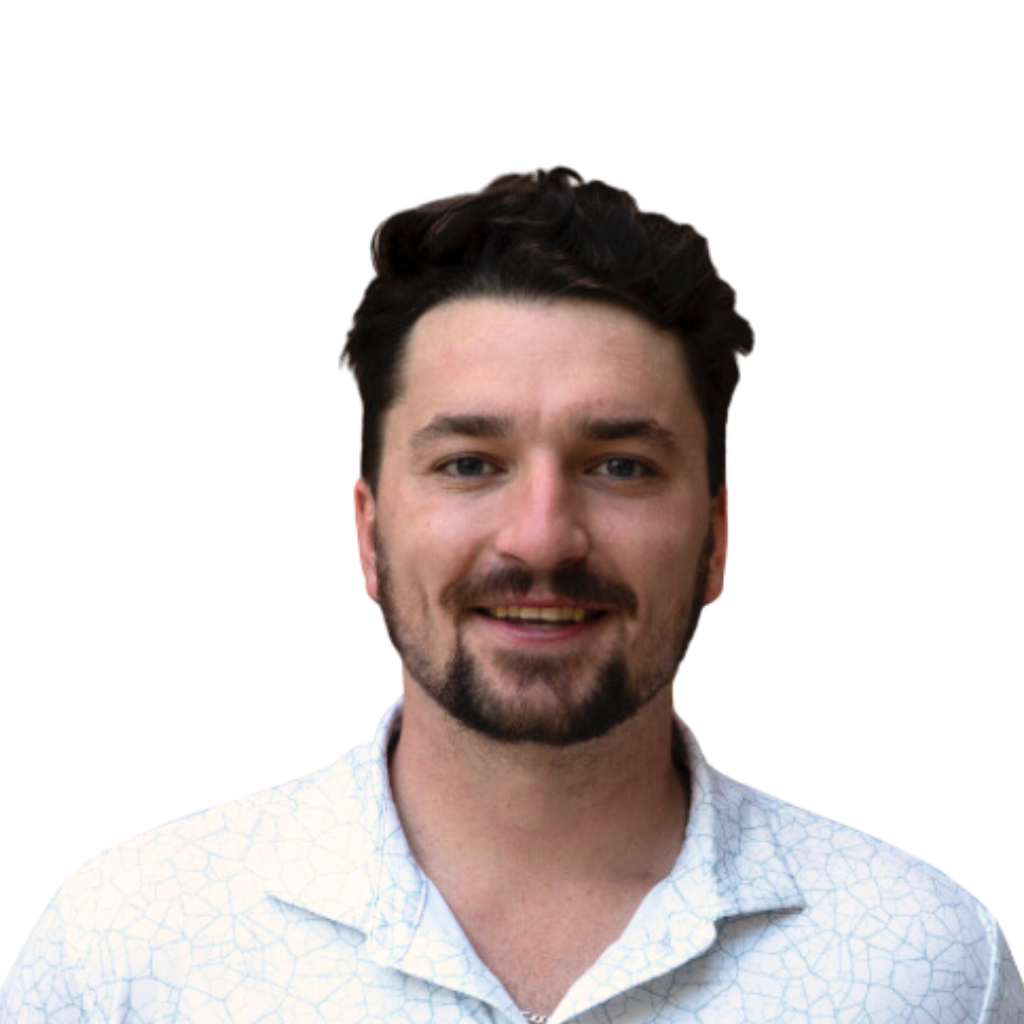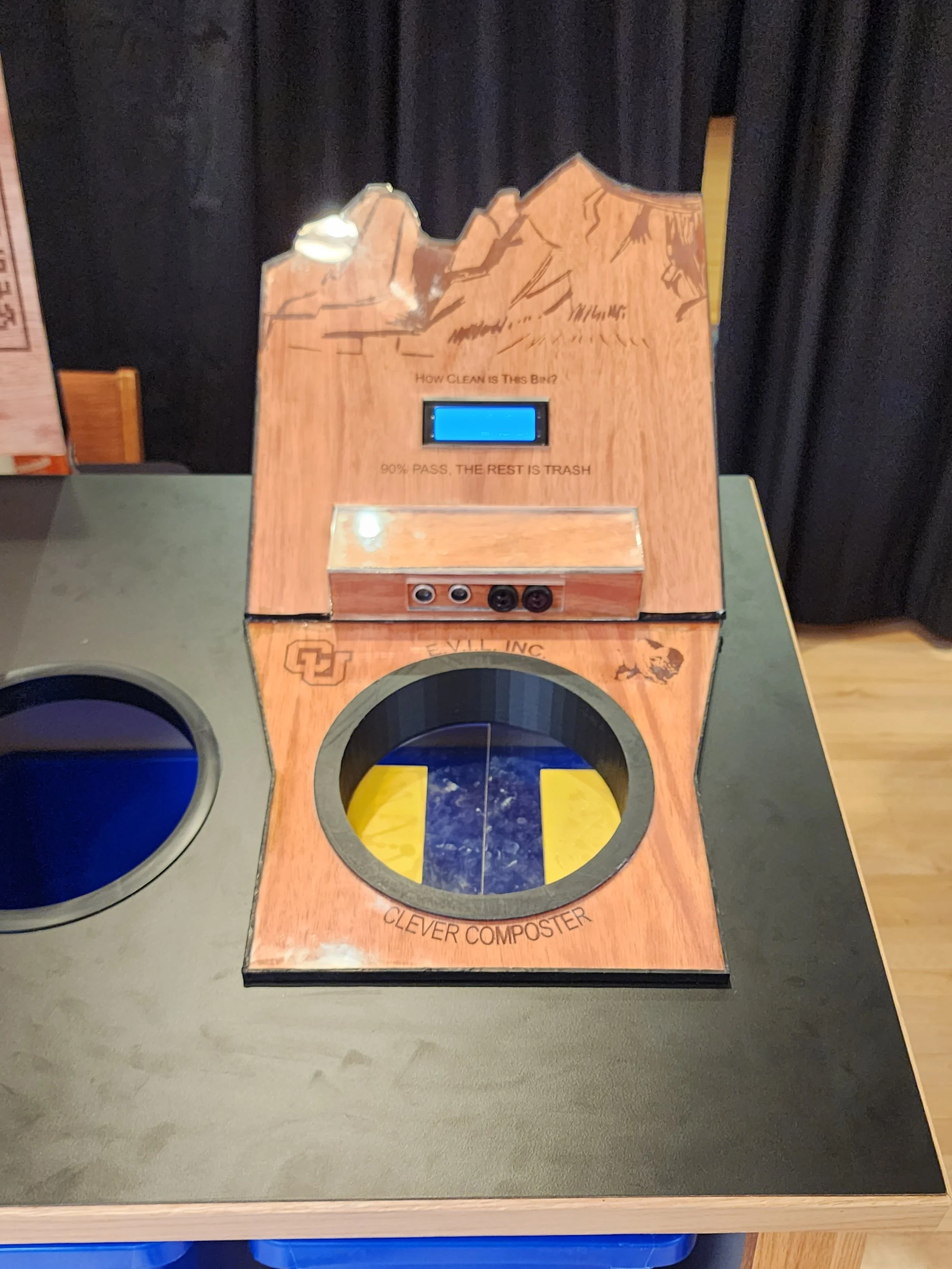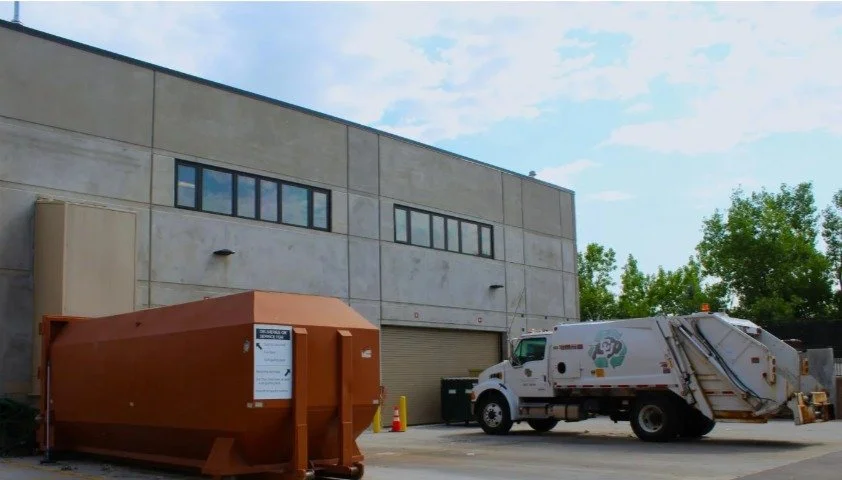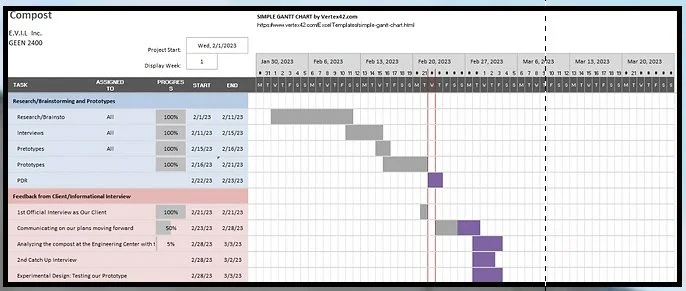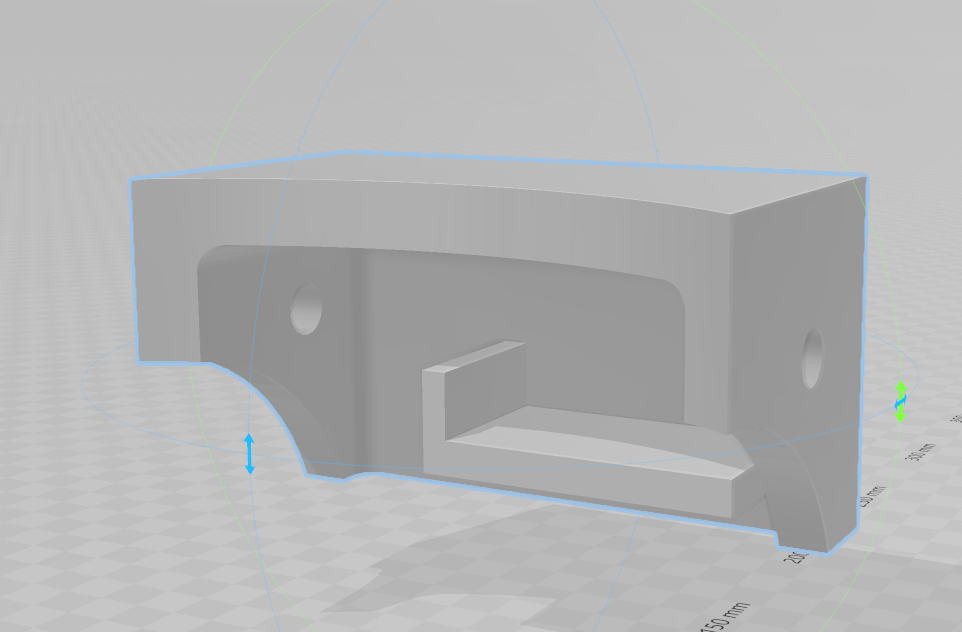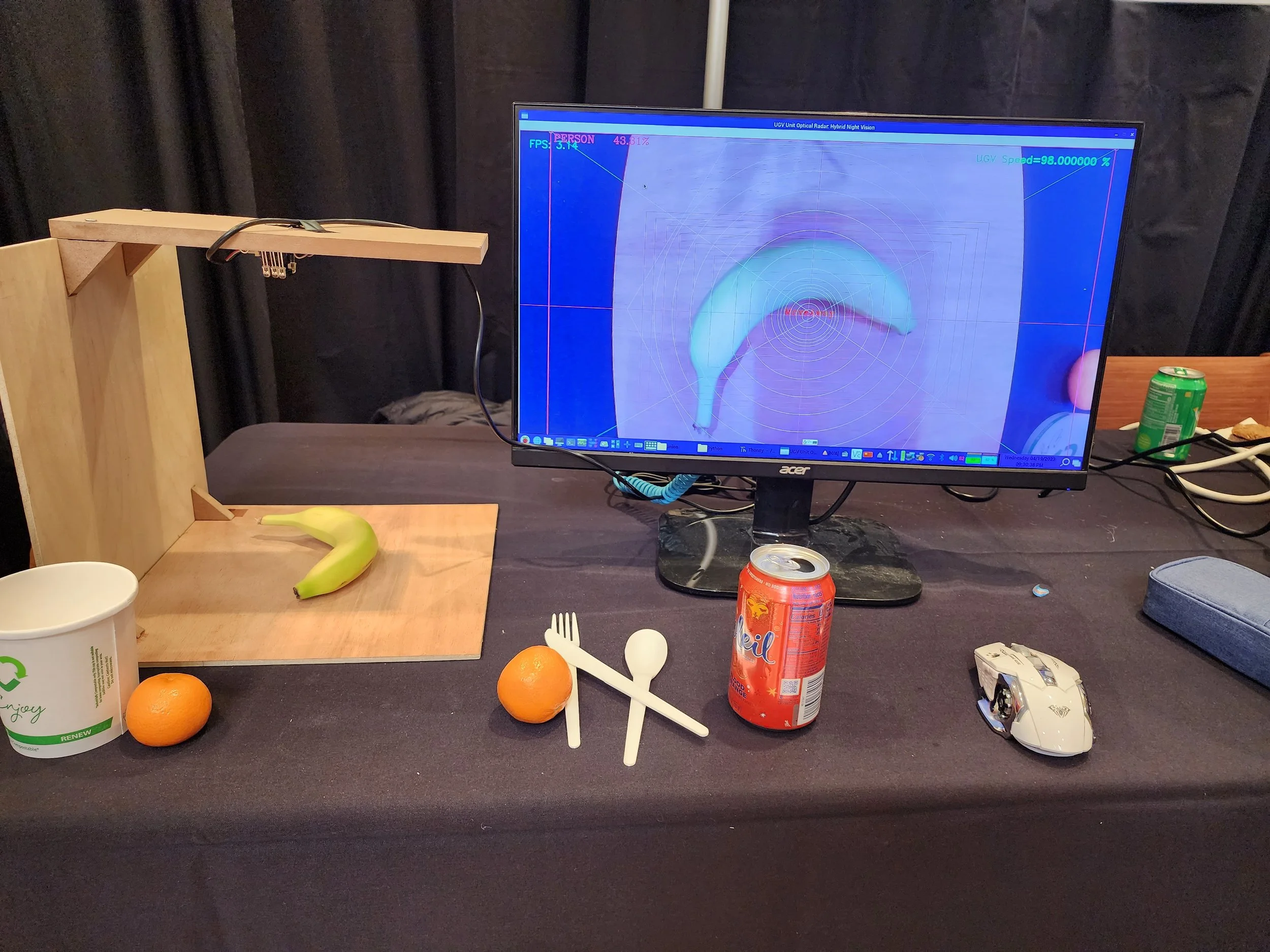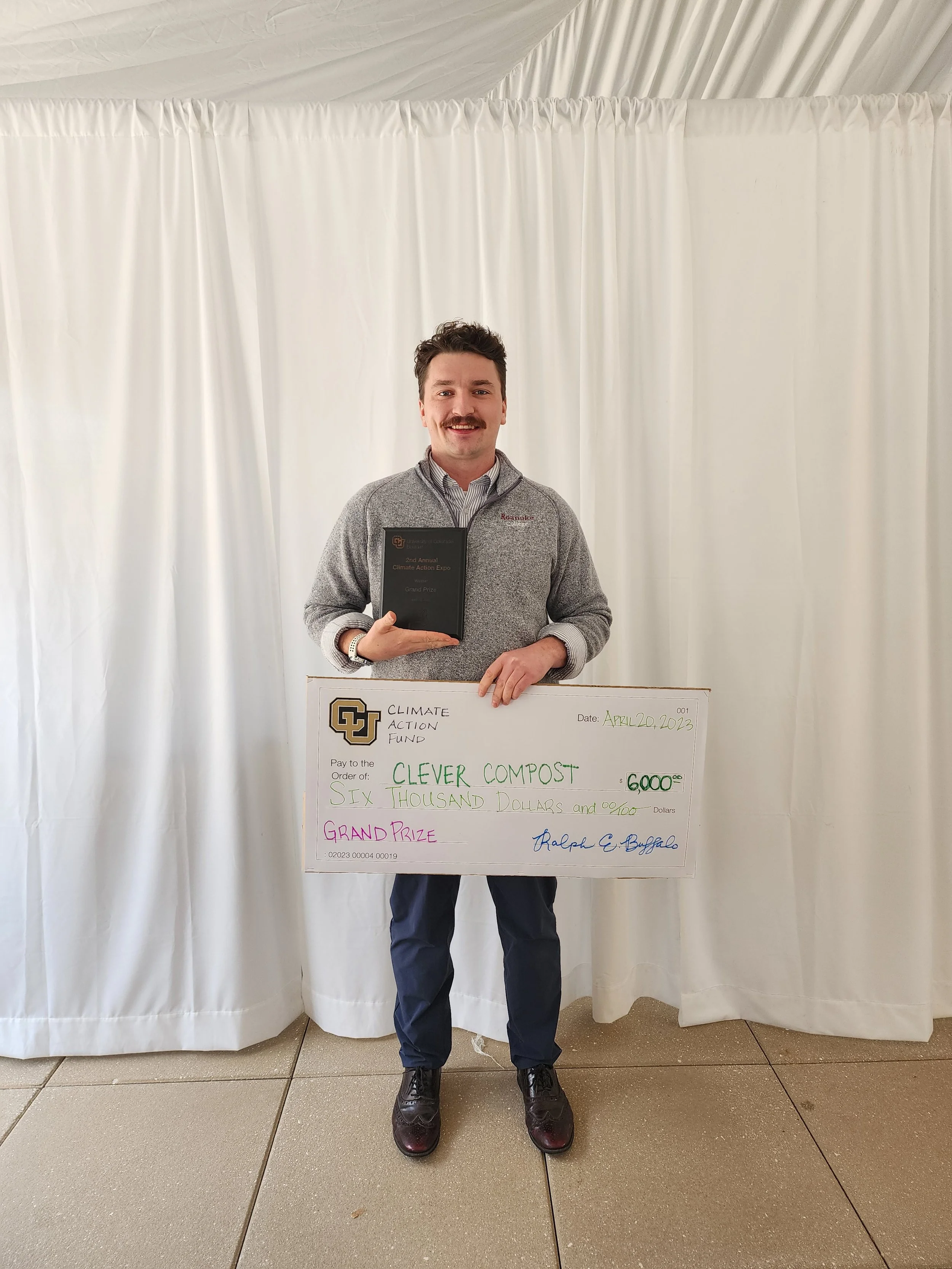The Clever Composter
The Clever Composter is a group of compost bin augmentations designed collaboratively by 3 teams of University of Colorado-Boulder (CU) engineering students.
The intention is to increase the purity of compost produced on the CU Campus and remove us from the blacklist's of local compost processors. Our team took on the CU Recycling Center as a client and developed our designs to specifically suit their needs.
We have presented our designs at 3 different Expos thus far, winning funding and multiple awards in the process. The portion of the design that my team was responsible for was an array of infrared and ultrasonic sensors connected to a mechanical door that prevented inappropriate materials from entering the compost bin.
This design was augmented by carefully trained A.I. that helped users sort items. We also supplied a display board connected to a website and a fully developed app for the recycling center workers to use during their rounds.
01 - Our Client
The CU RECYCLING CENTER is responsible for collecting and hand sorting all of the material from every bin in the educational buildings and dorms.
We worked with the head of operations, Jason Tavares, and his team to come up with outreach and design ideas to meet their constantly changing needs and specifications.
They also put us in touch with other groups working towards the same goal including the Leeds School of Business student government, AMP robotics who developed a very similar AI while at CU, and Scott King, the founder of the mission zero initiative. They were incredibly helpful.
A1 ORGANICS is the entity responsible for handling the final compost processing for most of the large producers on the front range.
At the beginning of the semester, they let out a press release informing the community that they would be cracking down on the amount of contamination they would accept in the compost they received.
For example, a single glass bottle in a 50-foot truck would result in the entire load being sent to the dump. Two months later, they informed us that they would only accept food and yard waste at their facilities—a standard that CU's aging waste management infrastructure could not comply with.
CU was effectively blacklisted and Boulder County was right behind it. To fix this, we needed to consult with the men and women on the front lines, the CU Recycling Center.
02 - Project Timeline
We were working with two other groups to inform our design choices, so our team had to keep our timeline pretty flexible.
Pictured here is our working timeline for the project.
This chart does not include our meetings with two other teams, the Environmental Sustainability Expo (4/20/2023), the Integrated Design Expo (4/29/22), or the Denver Museum of Nature and Science Expo (5/7/2023).
03 - Technical Analysis
The major technical hurdles we had to overcome were the calibration of our infrared + ultrasonic sensor array, designing the device to be removeable and to fit the existing recycling cabinets, and fitting the motors and door system inside of the available space.
The metrics for success on each of these items were easily identifiable as the design either functioned as desired or it didn't. For the sensor array, we needed the grouping to be able to read distance from the device, and discern between organic and transparent plastic materials.
For the insert ring we desired a snug fit in the recycling cabinet with just enough space for wiring to slide inside.
For the motors and door assembly, the doors needed to be held level and the motors had to be strong enough to withstand being forced open. We were successful in all of these regards after many iterations and lots of testing.
04 - Cad and Code
Here are some of the Cad files we used to 3D print our designs. Top left you can see the insert ring we used to make the entire system removeable. Bottom right is a bracket specially designed to fit this ring that held a pair of massive stepper motors that brought the bin to life!
05 - Major Challenges
The major challenges of the project were definitely the calibration of the infrared sensors to distinguish between transparent and organic material, keeping all of the team members ahead of schedule despite procrastinating personallities, and the 50+ hours and 13 iterations it took me to figure out my mechanical bin ring component in the first two months of development.
The infrared sensor issues were solved once we moved away from the prescribed frequencies we were attempting to use from internet forums. We did a big sweep of ranges to locate what gave us the most consistency and dialed them in from there. We also added a reflector for the transparent material to vastly improve its performance.
The procrastination was a toughie. I tried to set deadlines well before the action item was due. Didn't work. I tried creating groups for each element of the project to hold each other accountable. Deadlines were still missed. Finally I threatened to decrease the winnings of procrastinating members form expo prize pools and we didn't miss a single deadline from then on.
06 - My Contributions
My major contributions to the project were most of the wood and acrylic work, acting as the team lead for my personal team as well as all of the organization of the 13 students and the development timelines of their projects, the design and creation of the bin ring and insert, the rubber gasket around all of the project pieces, collaboration with our client and outside student organizations, and keeping the entire team two weeks ahead of the prescribed class schedules to be ready for expo season.
07 - Testing and Analysis
Our testing process mostly revolved around our circuitry and artificial intelligence being able to recognize different forms and materials in CU's waste streams.
This was a trial and error process that involved hundreds of salvaged cans, bottles, and bananana peels being thrust at our sensors, and then providing them feedback on their best guesses as to what these items might be.
08 - Expos and Winnings
Our team had the pleasure of attending three separate expos with our design over the course of the semester. We debuted our project at the 2nd Annual Environmental Sustainability Expo on Boulders Campus at which we took the grand prize and won $6000 dollars.
We then had an excellent showing at the College of Engineering's Integrated Design Expo, and finished up with a special invitation to present at the Denver Museum of Nature and Science where we had the chance to show our project to the public. We had an excellent showing and the project was well received in all regards.
09 - Future Work
We will continue our work with the CU recycling center and plan to take on a few more interested team members next semester.
With the winnings from the sustainability expo we plan to attend quite a few more expos and continue to build buzz around our device.
The next iteration is already in development and grants have been applied for. Out of the 12 members who worked on this collaborative project, 6 have decided to move forward and we couldn't be more thrilled. We are looking forward to moving in to a bin near you!
10 - Budget
With a budget of $375 ($75 allowed from each student), we nearly perfectly utilized our entire budget to bring this idea to life.
Many, many spools of PLA filament were run through in the 30 or so iterations of the bin insert and ring designs.
Throughout the semester the team did an excellent job of spreading the financial load and with the $6000 win, each member was fully reimbursed for their material costs.
11 - Final Design Pictures
Because we have gone to so many events and had such wonderful opportunities, many of the best pictures taken of this project are in the hands of others!
We are working with the photographers from all 3 of the expos to get our hands on them currently. Untill then, here are a few more design images to tide you over.
